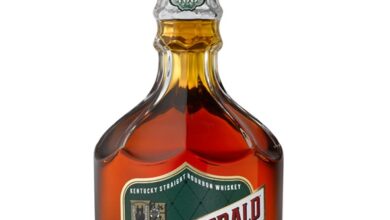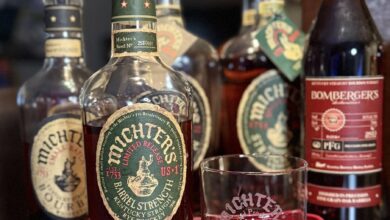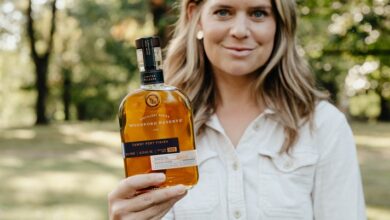A. Smith Bowman Sequential Series #16 Bourbon Review
By Richard Thomas
Rating: B/B

(Credit: Sazerac)
As much as Buffalo Trace is known for its commitment to experimenting with whiskey-making (witness Warehouse X), for a steady stream of interesting twists on the production process one should turn to their Sazerac stablemate, Virginia’s A. Smith Bowman. The most recent example is the latest release from the Abraham Bowman Sequential Series.
The purpose of the Sequential Series is to explore the outcomes of different types of long-term barrel finishes. This particular pair of bourbons have a somewhat complicated background, so I will quote Sazerac’s press release directly:
The first expression was aged for nine years in new charred white oak barrels before being transferred into barrels that had previously held bourbon for nine years. Half of those bourbon barrels were barreled at 125 proof and half were barreled at 115 proof, before finishing for three years and five months.
The second expression was aged for nine years in new charred white oak barrels before being transferred into barrels that had previously been used to age bourbon and port wine, and then were used to finish their Abraham Bowman Port Finish Bourbon, which went on to be named the 2016 World’s Best Bourbon by Whisky Magazine. Half of these fourth-use barrels were barreled at 125 proof and half were barreled at 115 proof before finishing for three years and five months.
The pair are labeled as second-use and fourth-use accordingly. The second-use bourbon has some constructive applications, since ex-bourbon barrels are used for both primary and secondary maturations of some American whiskeys, and it’s interesting to see what an extra 3 1/2 years in such wood will do. Barrels that have been use to age bourbon, Port and then give a Port-finish to bourbon, on the other hand, are unheard of insofar as I know, making that one more esoteric than instructive. Both were bottled at 100 proof.
The Bourbon
Starting with the 2nd-use bourbon, that one has the look of dulled copper in the glass, like a cooking pot that isn’t quite clean. A coating of the glass will drop a sheet of tiny narrow tears.
In the main, the nose on this ex-bourbon barrel-finished, 12 1/2 year old bourbon is like a dish of baked apples with dried cherries and caramel drizzled over the top. However, there is also a certain old, musty wood aspect to the scent, as well as a toasty note.
I found the liquid light on the palate, and the sweetness of the nose taking a kiwi and fig with vanilla direction on the tongue. That soon turns spicy, and predominately wood spicy at that, but this spiciness subsides. The finish is in the vein of sweet cinnamon.
The 4th-use bourbon, also 12 1/2 years old in total, was darker and redder than its counterpart, with a color that was in full-on amber territory. My experience with the world’s other industries tells me that the wood used for the finishing of this bourbon should be at or near the end of its usefulness, so that extra color undoubtedly comes from the Port rather than the oak. It too dropped a sheet of tiny, narrow tears.
The nose smacks of a boozy, citrusy Christmas fruitcake, with plenty of dried fruits and spices. The flavor was candy corn, toffee and vanilla, with a spicy current of oak that ran to a peppery, carmelized finish.
The Price
These bourbons come in 375 ml bottles priced at $39.99 each.




